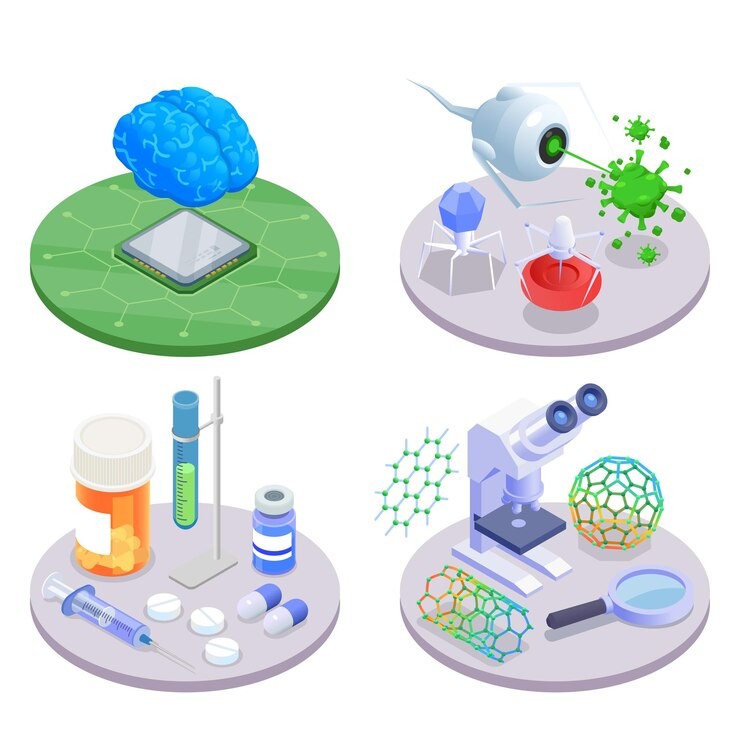Suppose someone needs a heart transplant, and scientists take cells from that person to make a completely new heart for them. This scene, once considered science fiction, has become a reality thanks to innovative technological advancements.
2024 is anticipated to enhance the healthcare industry with breakthrough discoveries. Most core changes are still pending. Future healthcare technology trends are expected to introduce innovative capabilities and strategic advancements.
The U.S. healthcare market is rapidly expanding. The value of the national healthcare product is predicted to rise to as high as 6 trillion USD by 2026.
Here, we are exploring top innovative medical technologies for 2024.
Artificial Intelligence (AI)
AI is poised to revolutionise drug development by accelerating the discovery of new medicines, a traditionally slow process.
Historically, starting clinical trials may take up to 26 months. However, AI can significantly shorten this time by predicting the best possible drug candidates and creating specialized drugs based on target needs. Notably, China has begun testing the first drug created solely with artificial intelligence (AI).
AI is predicted to introduce 50 new treatments within the next ten years, potentially saving billions of dollars in development expenditures per year.
Moreover, AI is revolutionizing healthcare diagnostics and treatment with the FDA approval of smartwatch sensors and advanced algorithms.It is analogous to the evolution of mammography in early breast cancer detection. It creates a vital shift towards practical healthcare management.
Furthermore, Medical facilities are implementing direct-to-patient solutions for triaging and providing advice via voice.
They potentially reduce general practitioner visits and provide essential guidance to underserved populations.
Telemedicine
The prevalence of telehealth and telemedicine has increased since the start of the Covid-19 epidemic in 2020. Telehealth involves remote non-clinical services, while telemedicine relates to remote clinical care.
The pandemic has led to individuals adopting new working and living methods.
According to projections, the global telemedicine market will grow from $68.36 billion to $218.49 billion by 2026.
Telehealth and telemedicine have gained popularity in the past two years. Virtual-care meetings are expected to surpass 1:1 doctor-patient video conferencing in 2022.
3D Printing
One of the most popular technologies on the market is the 3D printer. It can create implants and joints for surgery using revolutionary printers in the medical field. Due to their total customization—digital capabilities enable them to fit an individual’s specs down to the millimetre.
3D-printed prosthetics are growing in popularity. It provides exceptional comfort and mobility for individuals undergoing procedures like hip replacement.
Nanomedicine
nanotechnology is gradually infusing everyday life. By the end of 2021, fantastic news had spread worldwide: scientists had produced small, self-replicating organic robots, or “nanobots.” It is reasonable to predict that 2024 will bring a plethora of groundbreaking developments in the field of nanomedicine. The field of nanomedicine is up-and-coming and open to early investment.
Here’s a quick explanation of nanomedicine: it’s the application of materials and devices that are nanoscale (microscopically tiny). For example, biocompatible nanoparticles, nanoelectronics devices, or even nanorobots (whoa!),
These are particular for medical applications and manipulations, like diagnosing or treating living organisms.
For example, it can hunt cancer cells or viruses by injecting a group of nanorobots into a human’s blood vessels.
Moreover, this technology is anticipated to effectively combat various genetic, oncologic, or auto-immune diseases on a cellular level.




